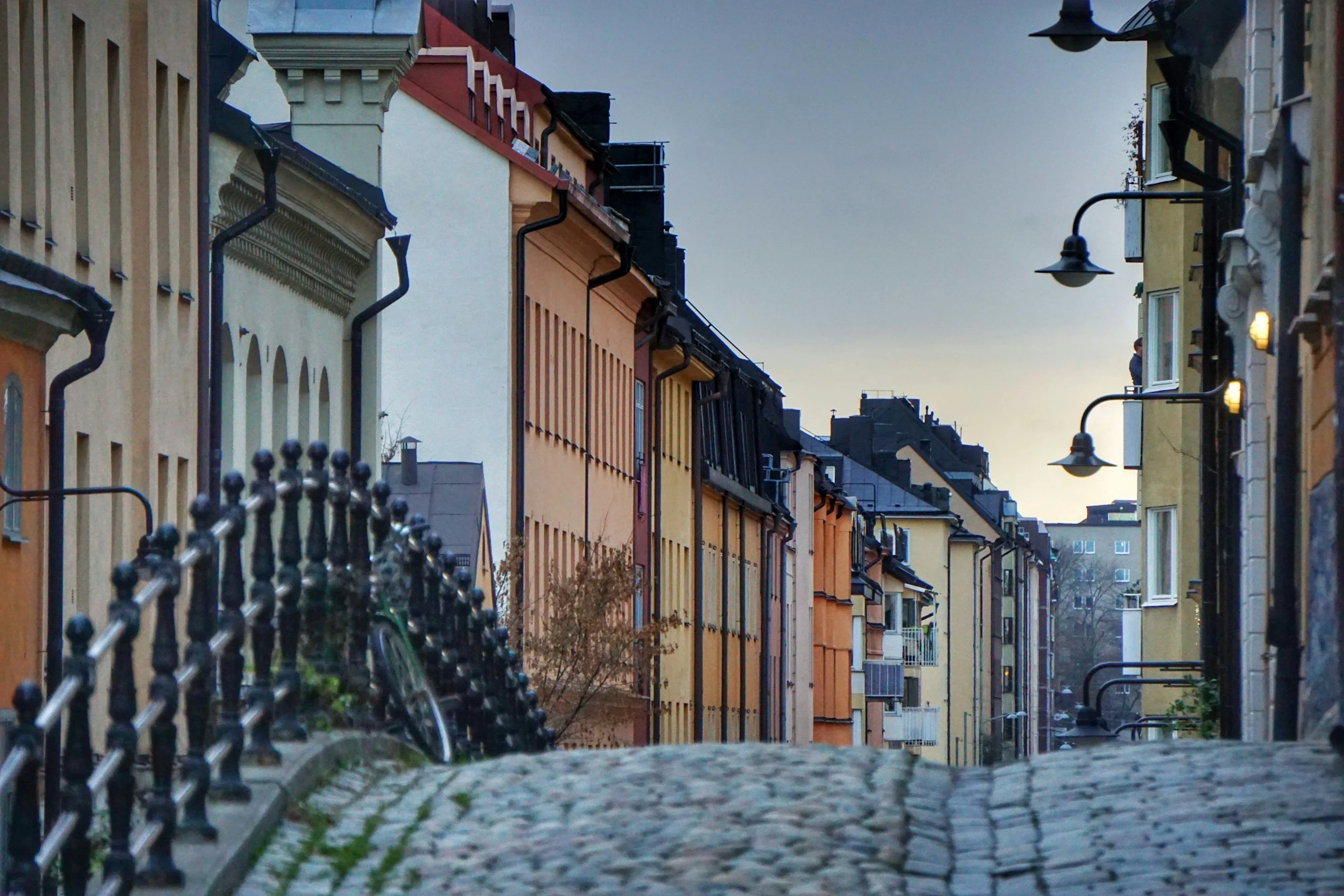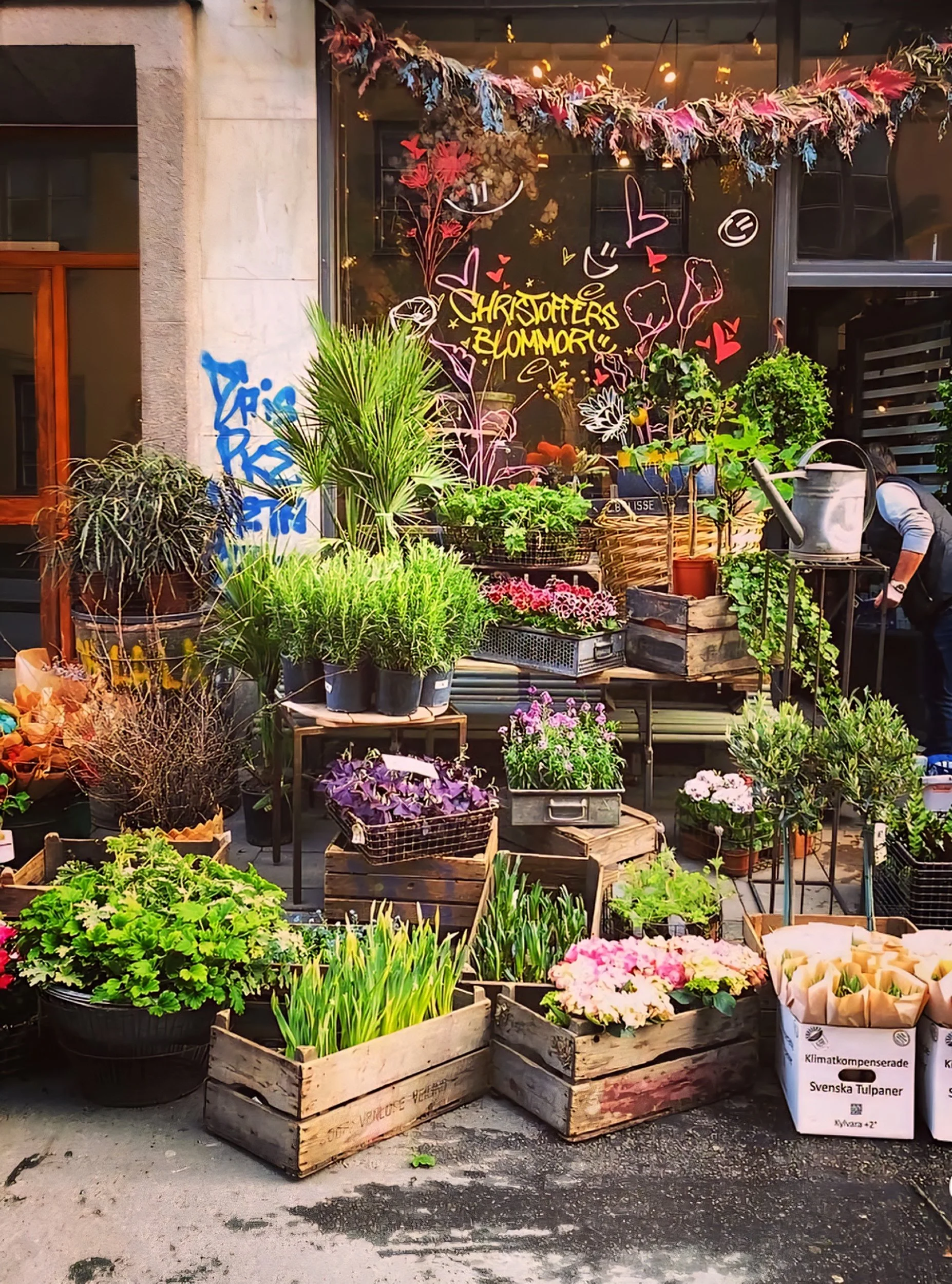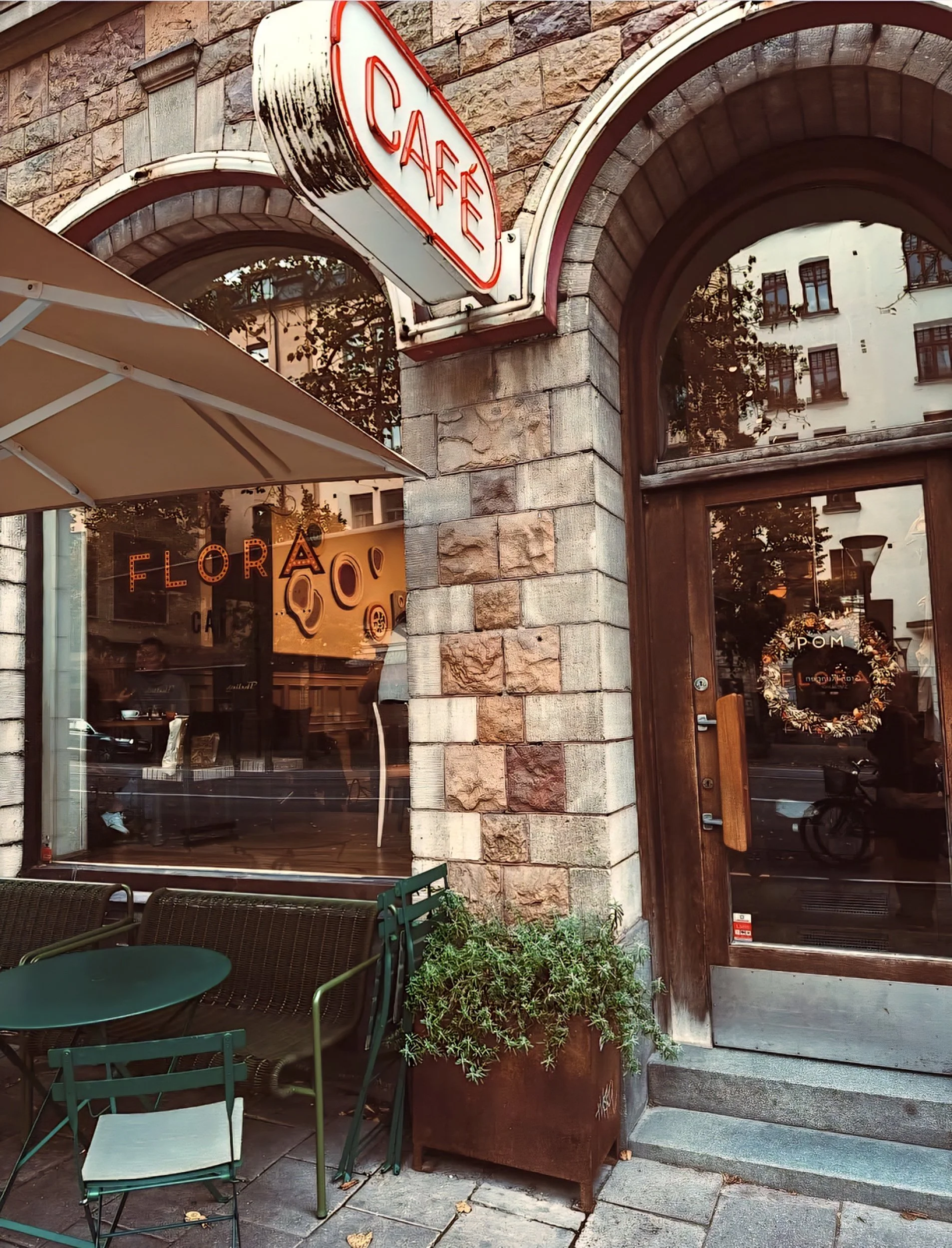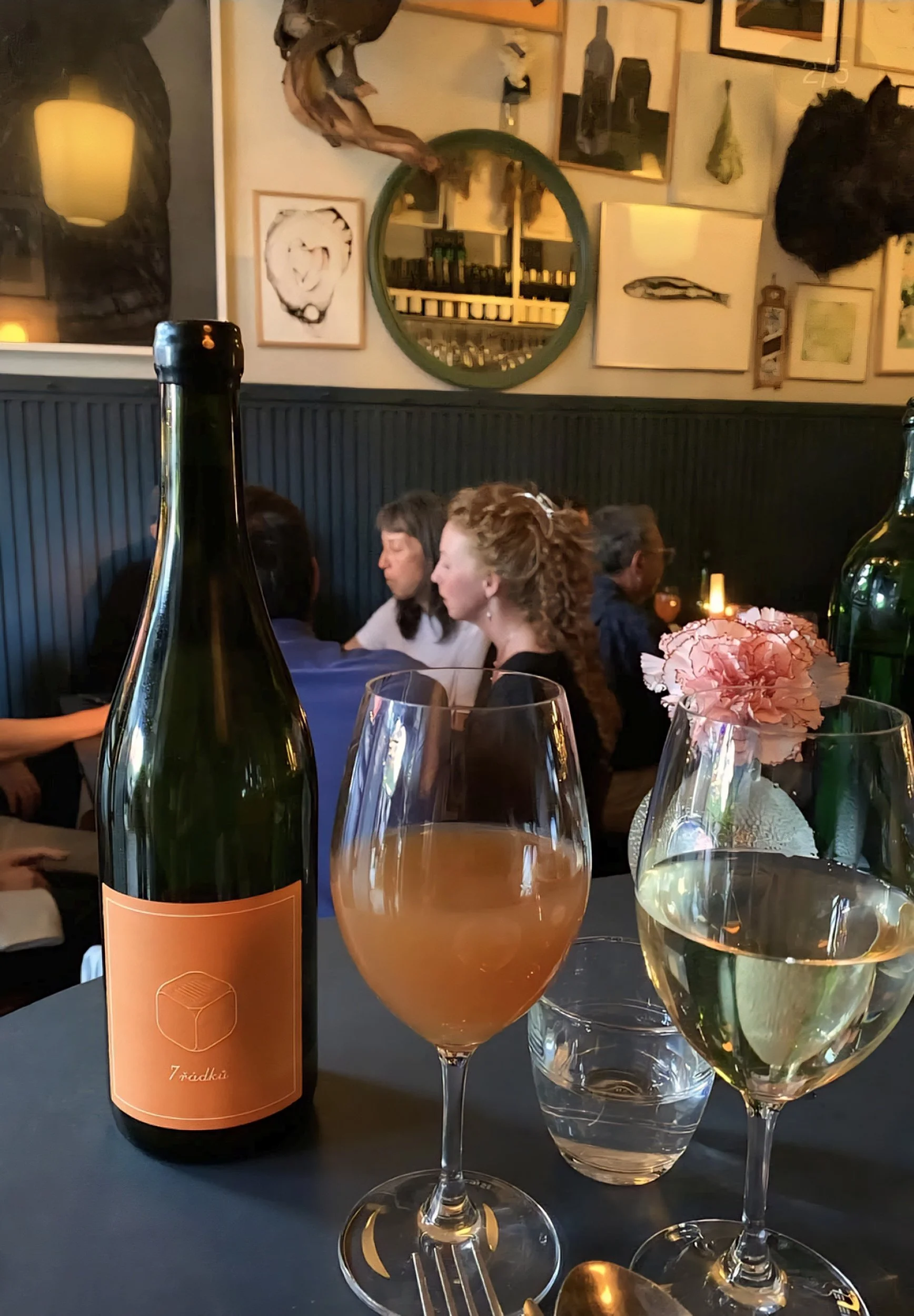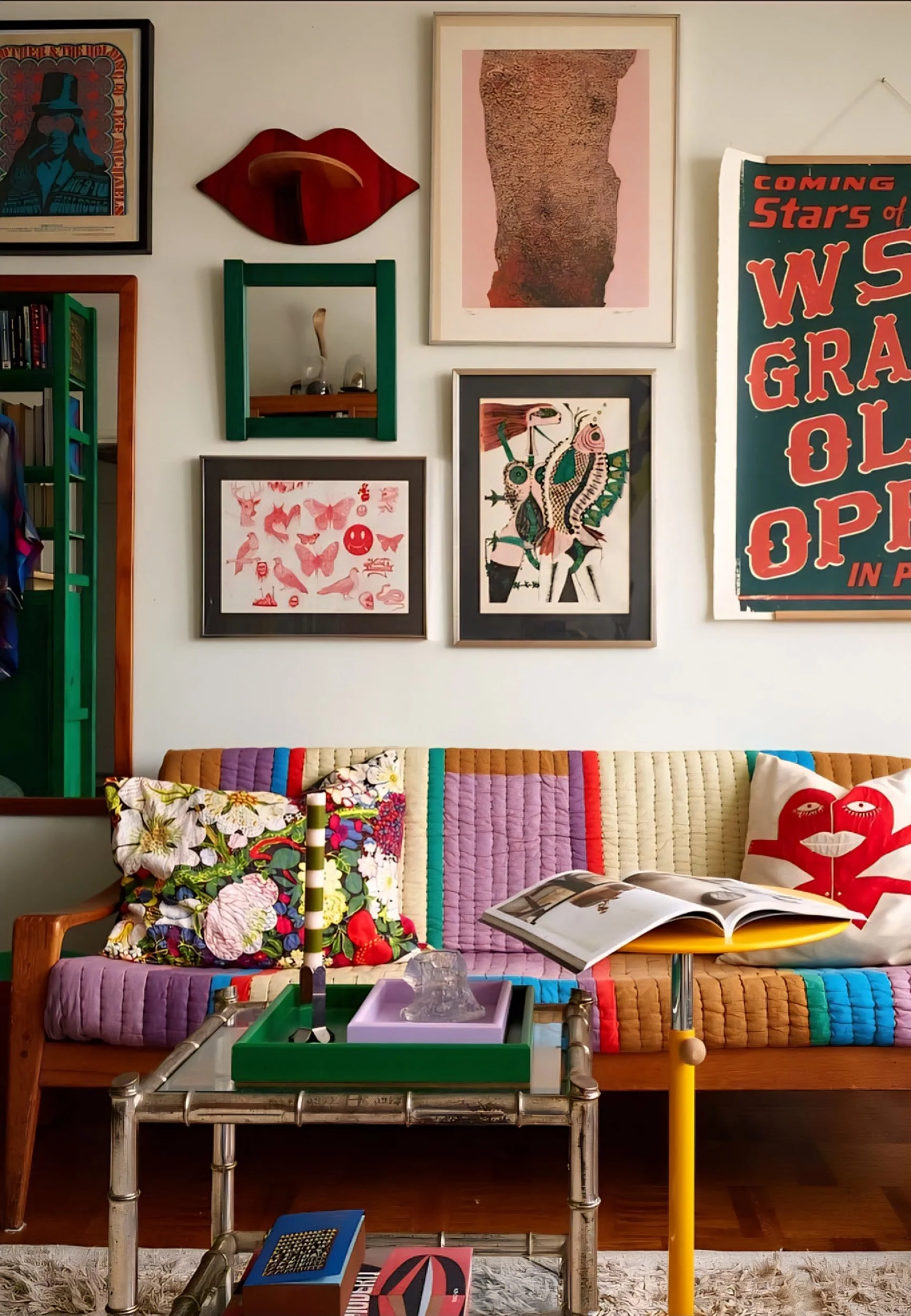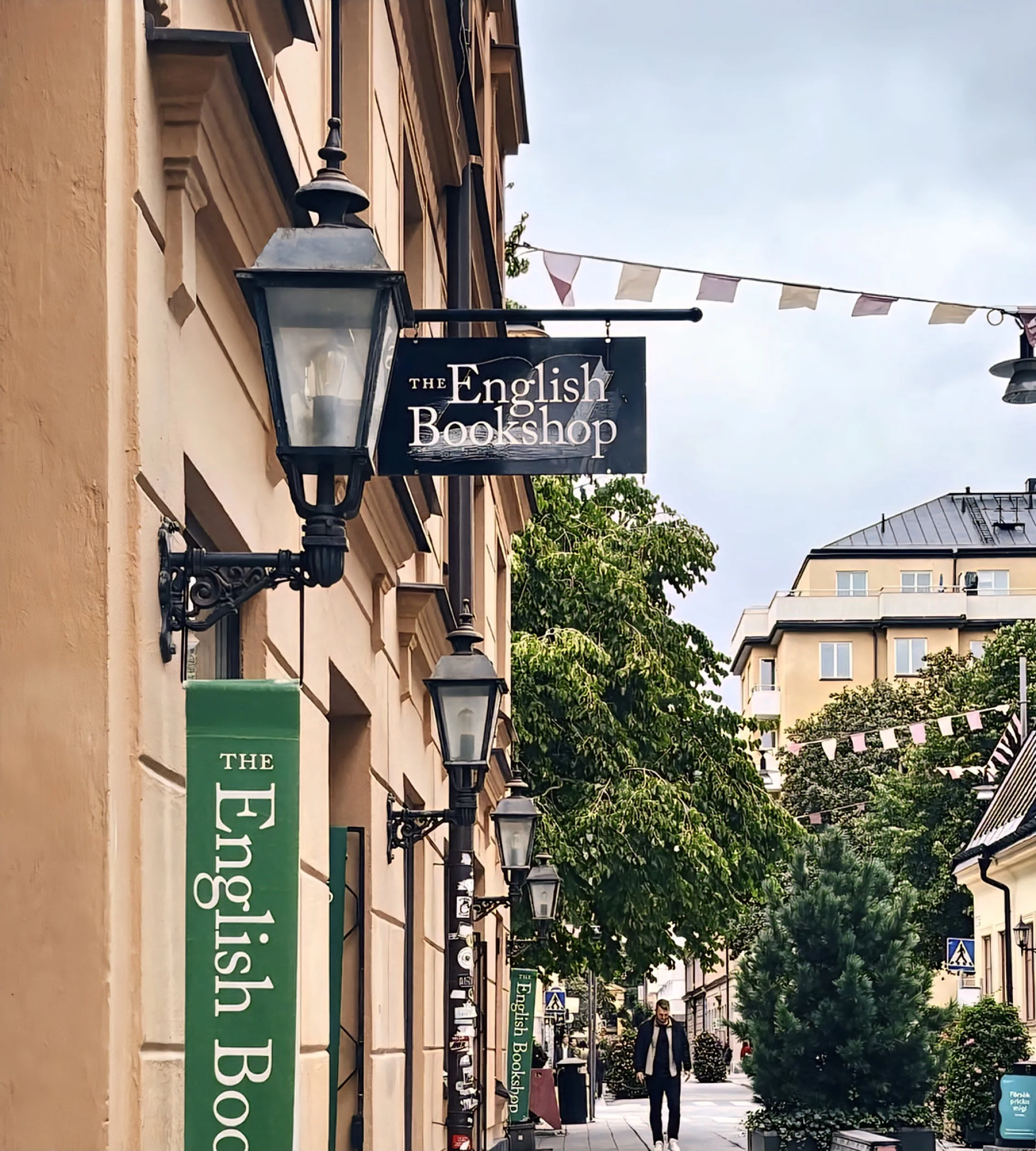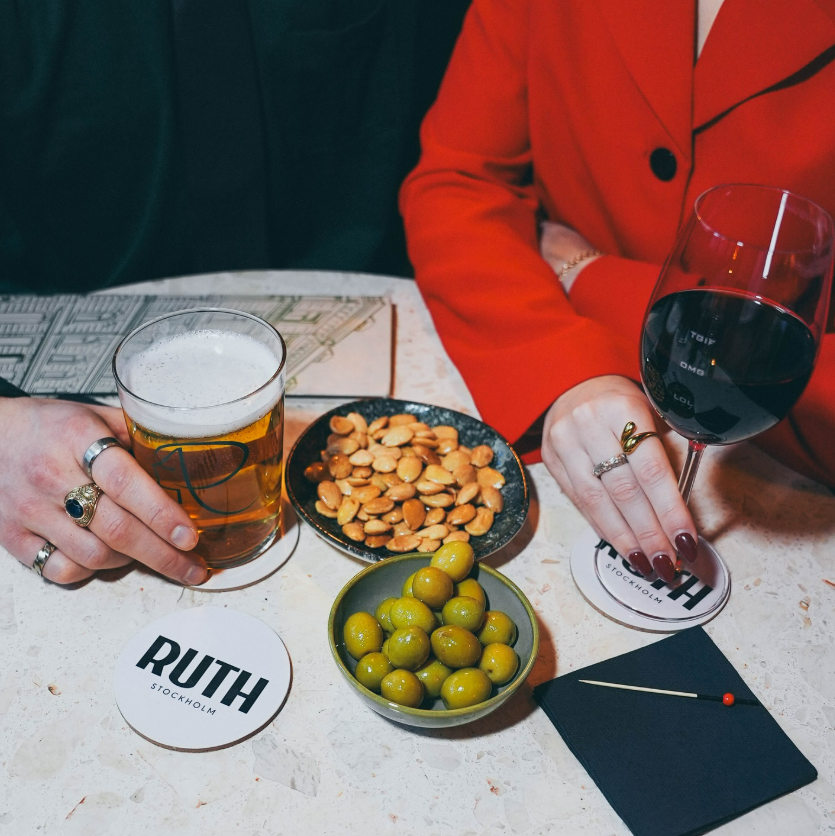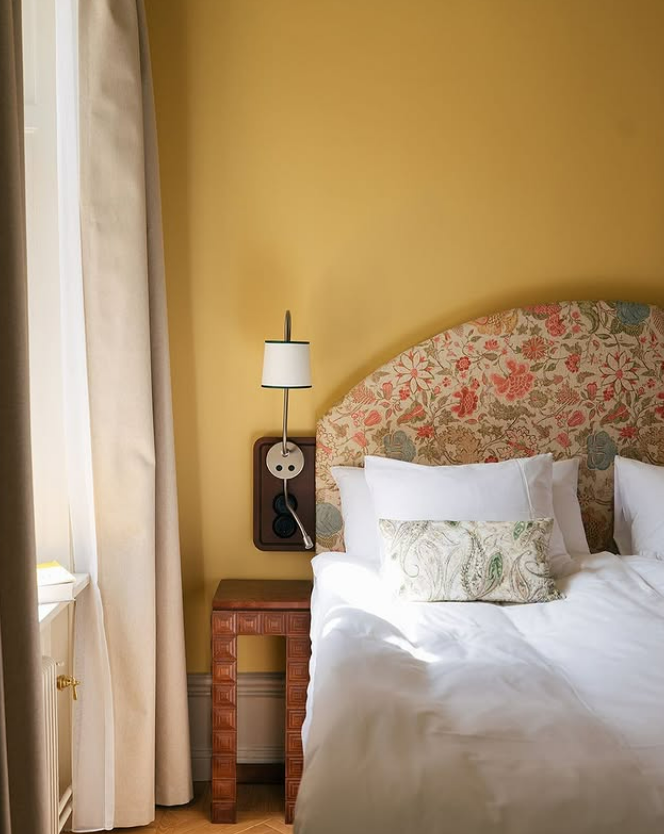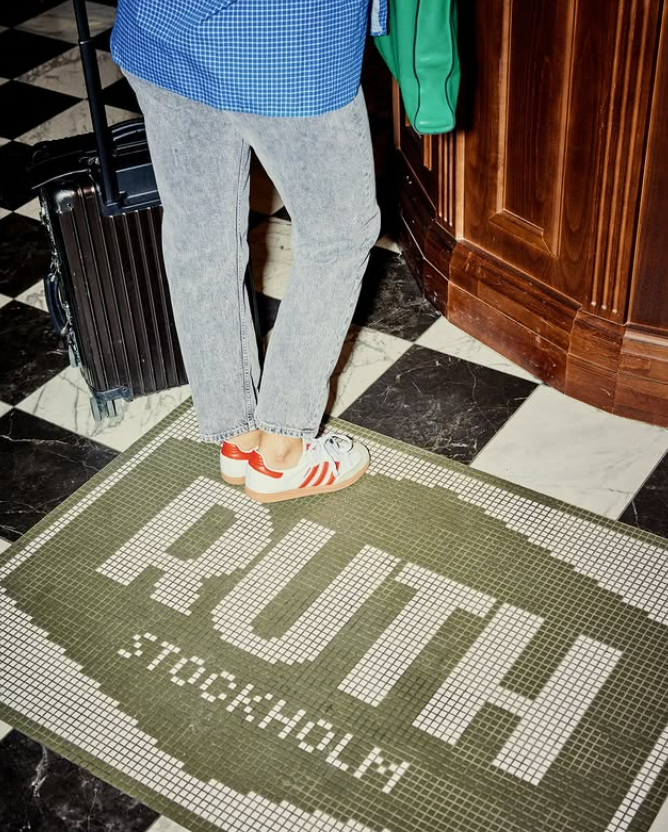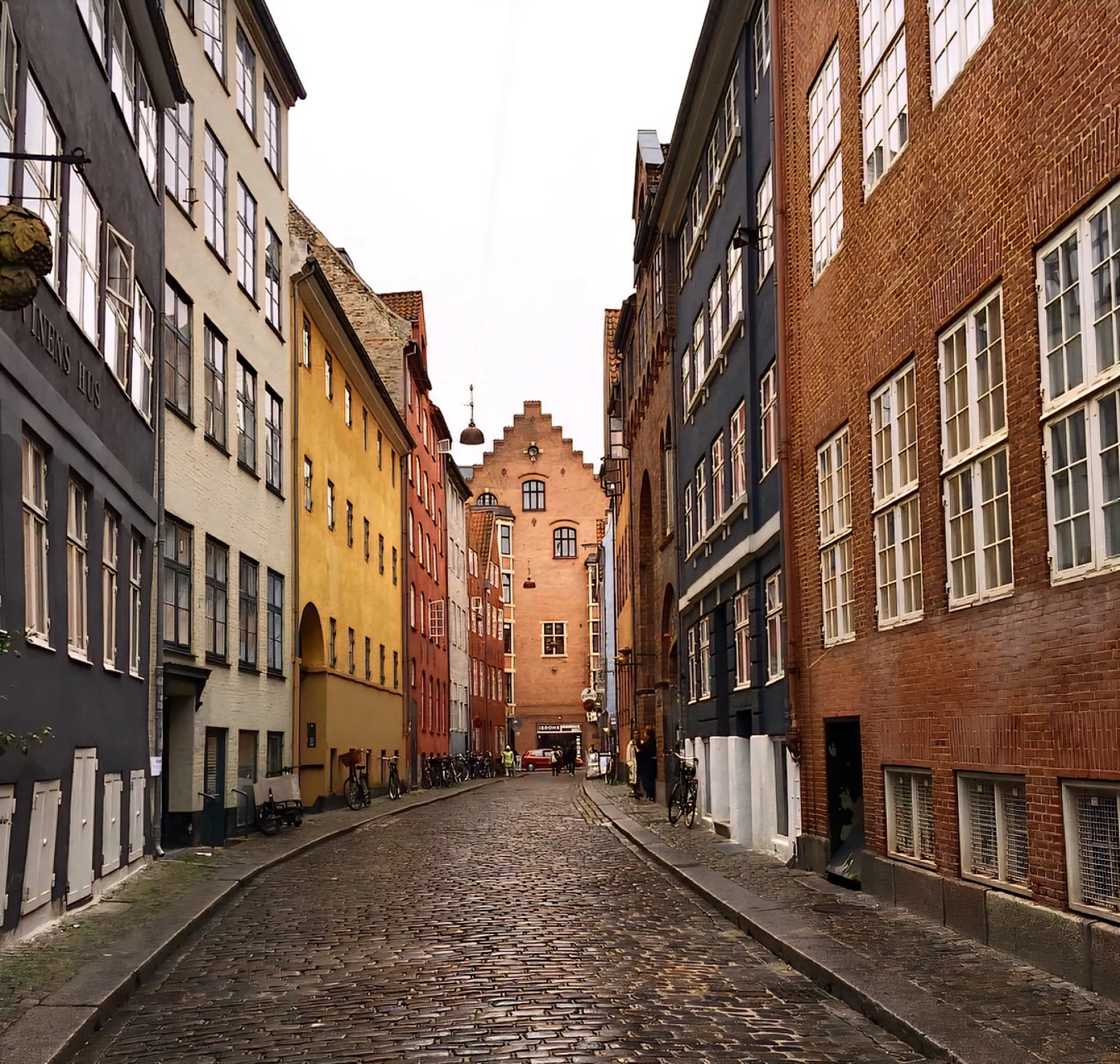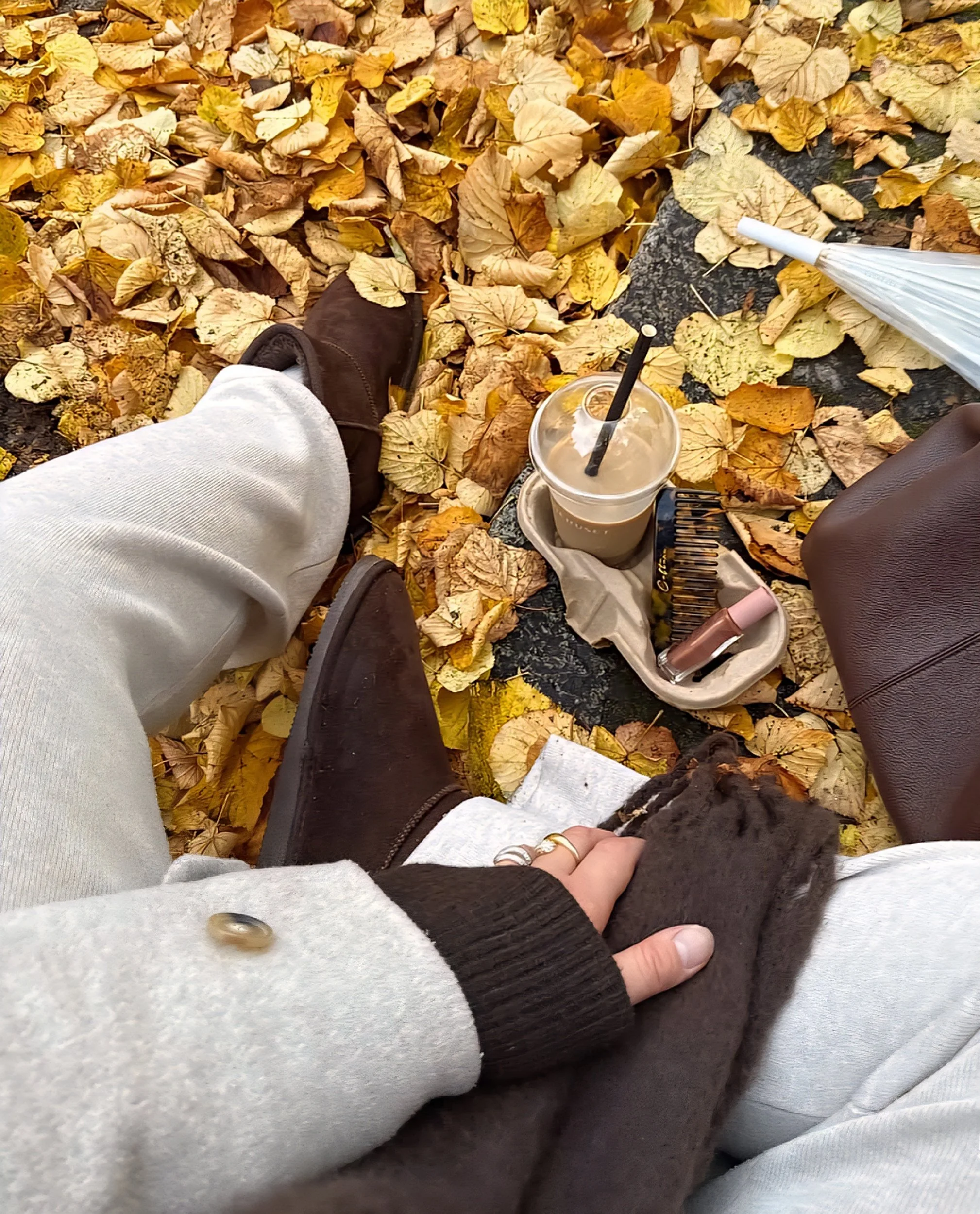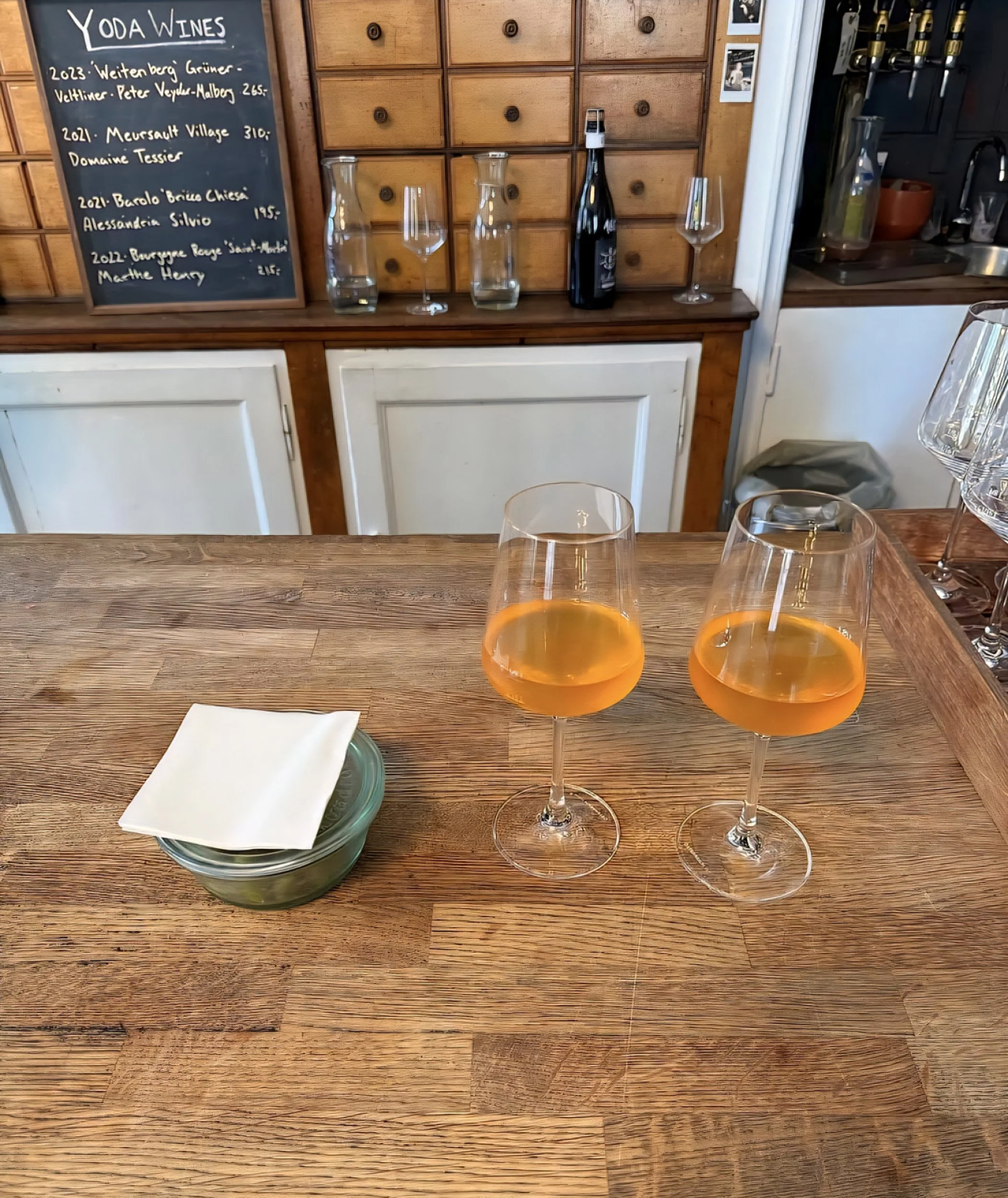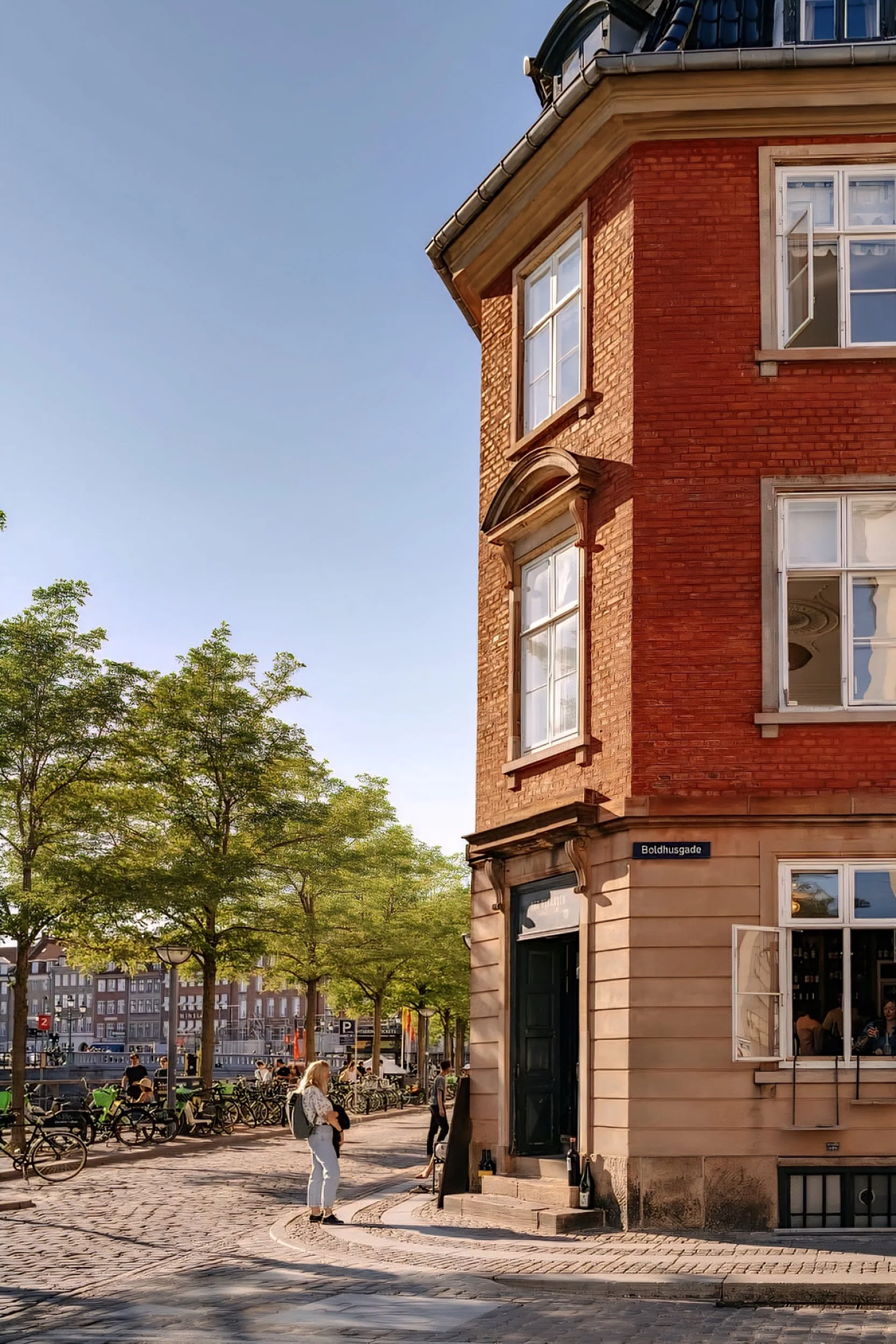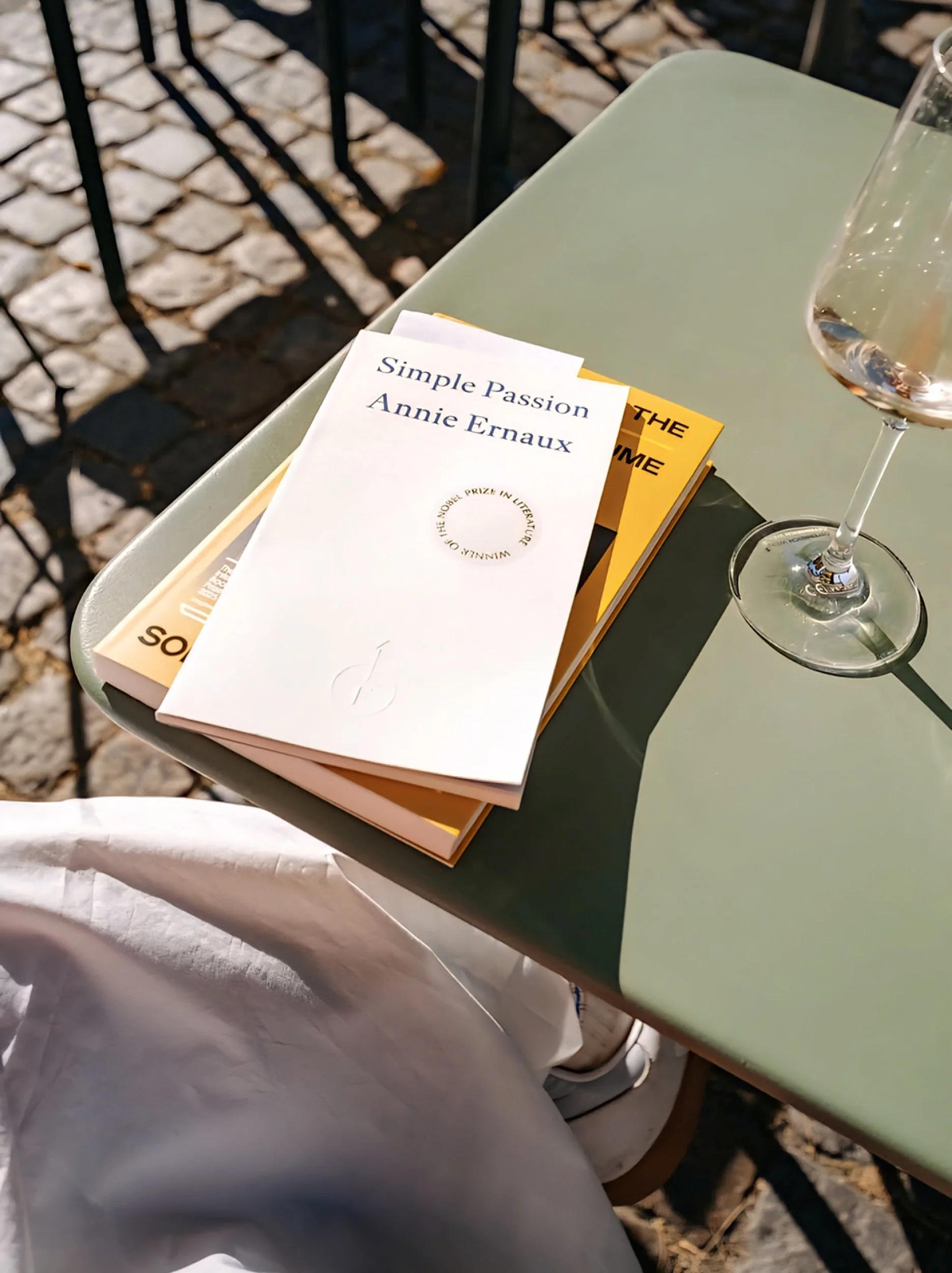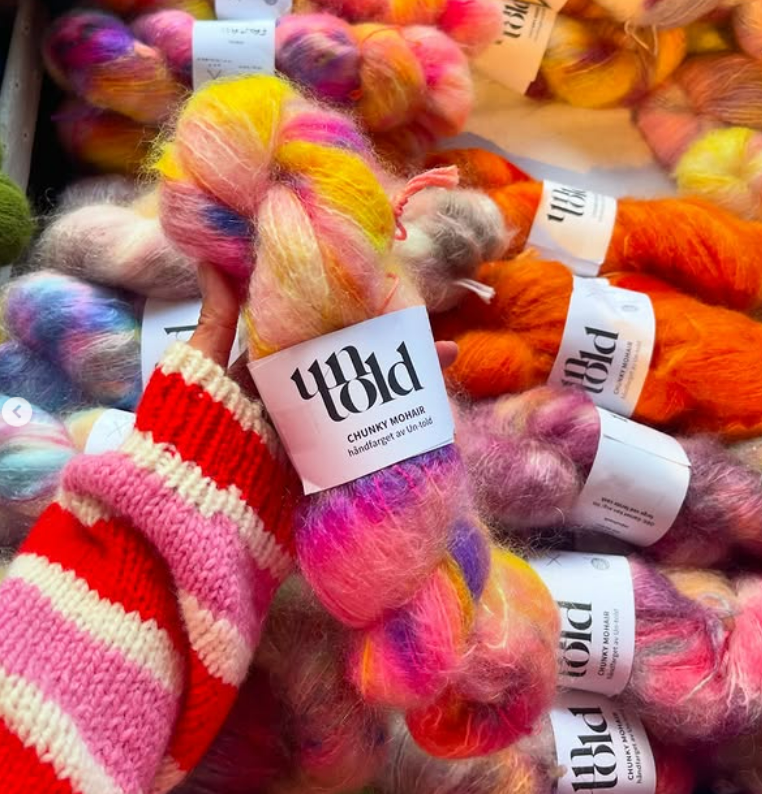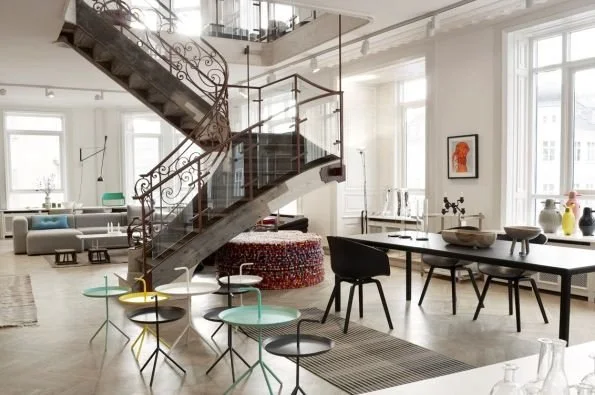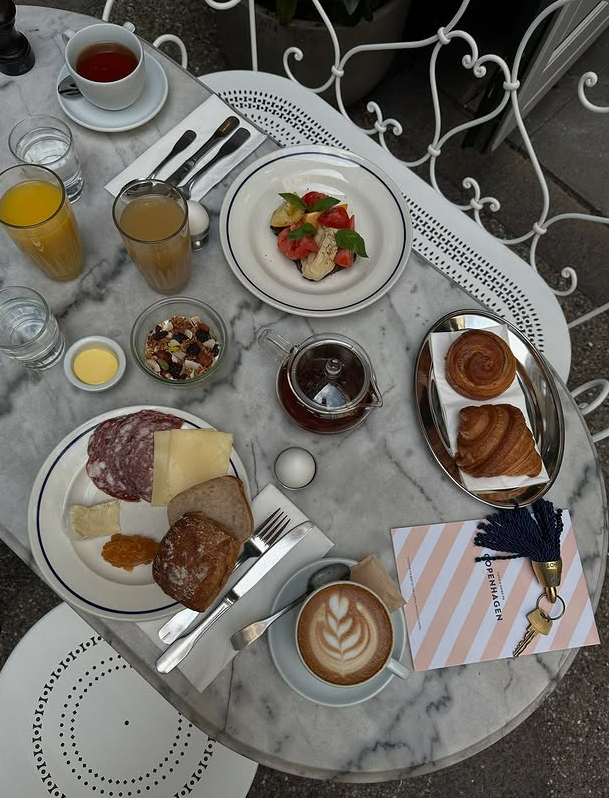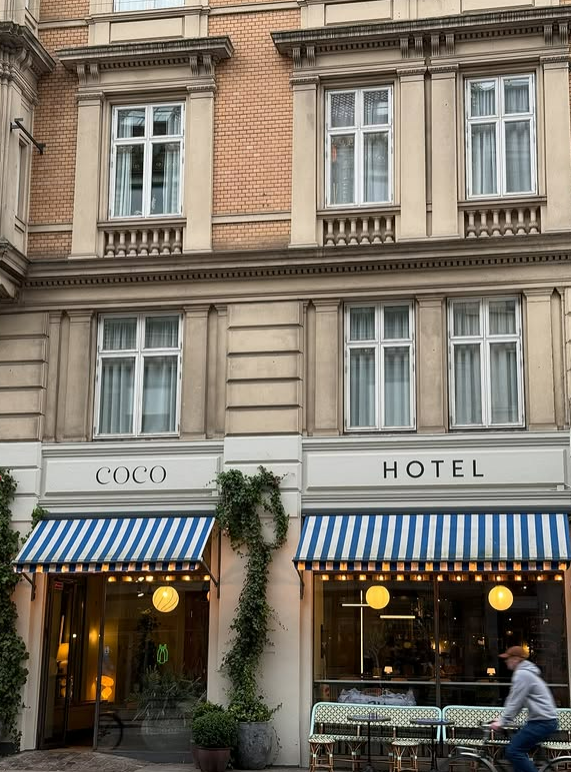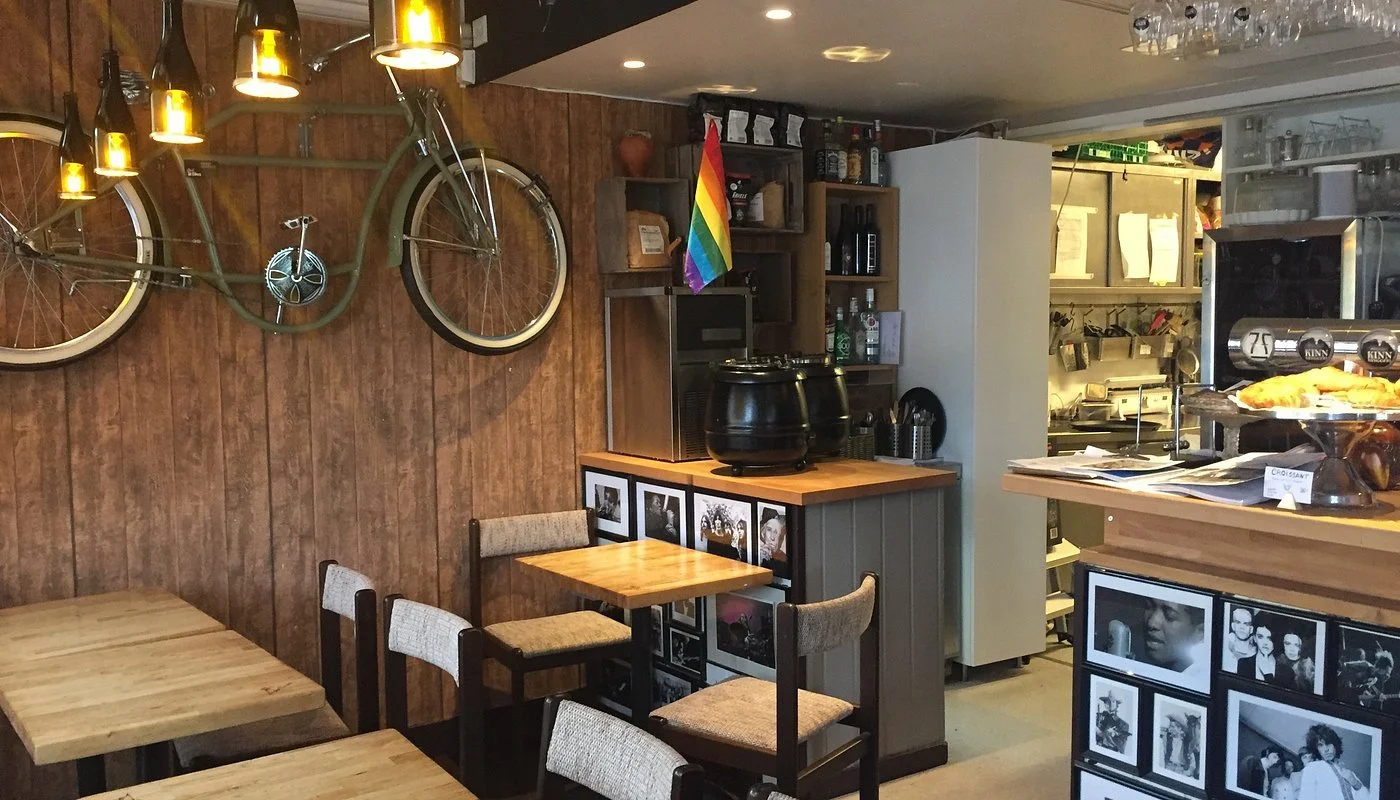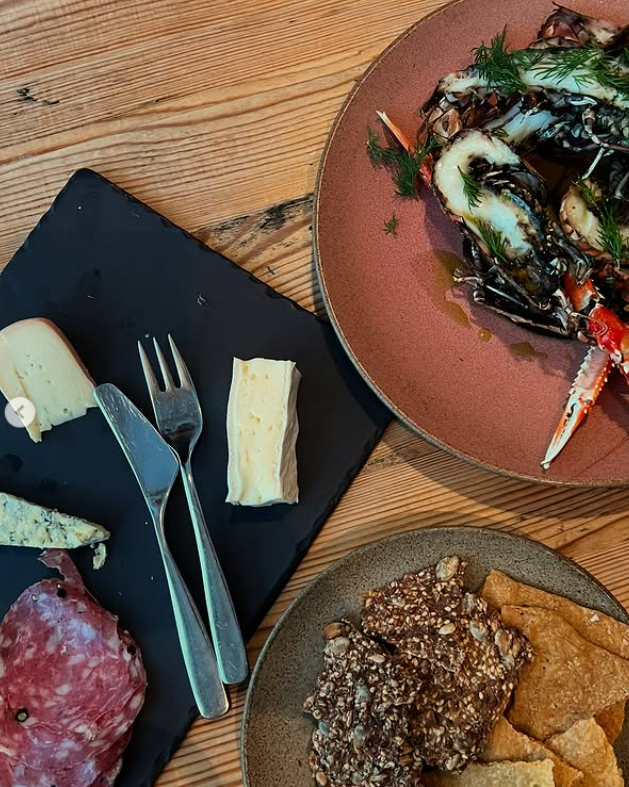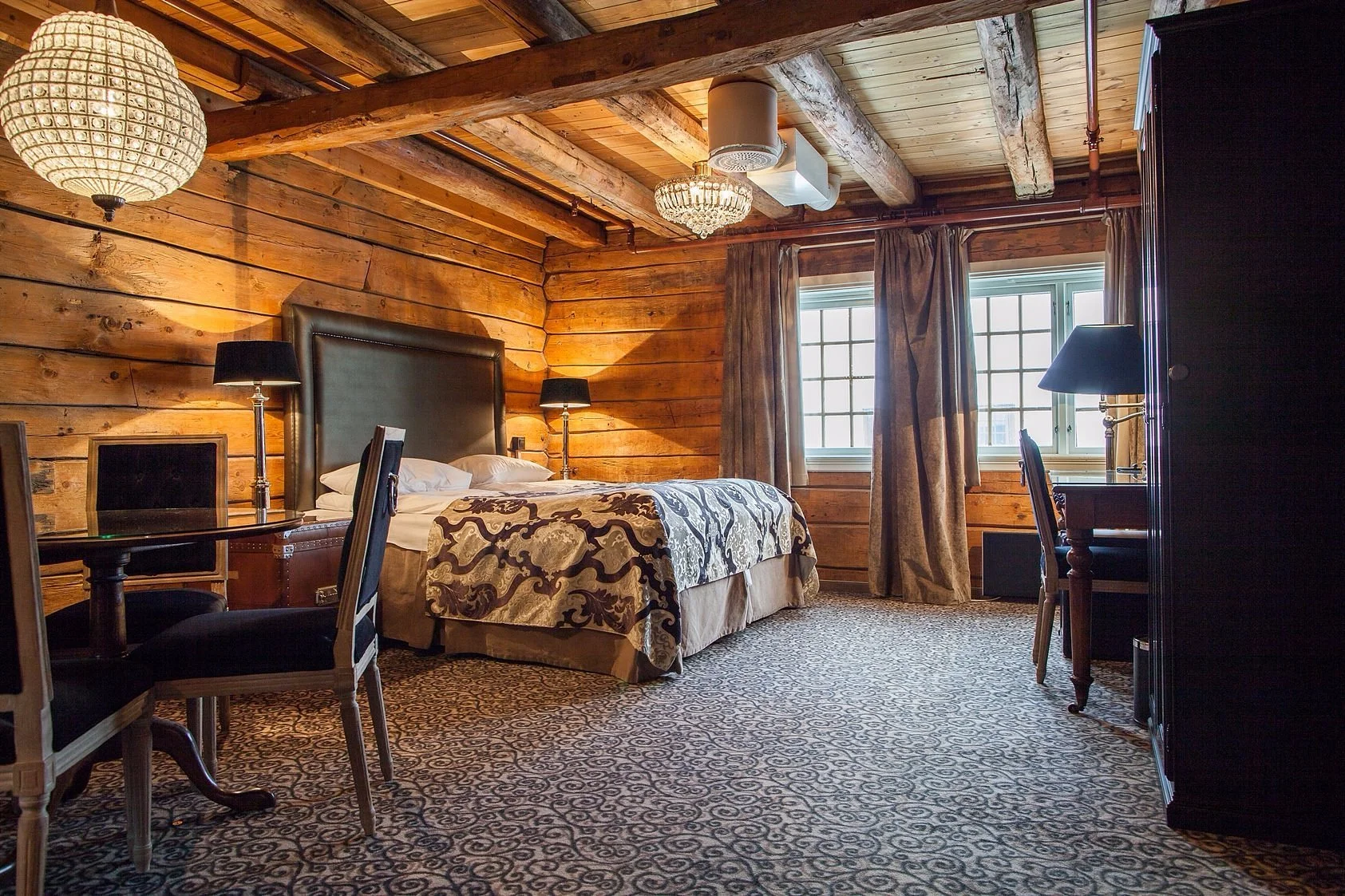Scandinavia in Autumn: A Cozy Travel Guide to Stockholm, Copenhagen & Bergen
There’s something about Scandinavia in autumn that feels like… a solo travelers dream.
Suddenly, it feels okay to move slower. To skip the must-sees. To build your whole afternoon around one café, one bookshop, or one walk that wasn’t really planned. Even if the weather isn’t always sunshine bliss, it’s still something extra cozy with the damp rainy days in Scandinavia.
If you’re someone who'd rather spend an hour in a secondhand bookstore than on a guided tour, or if your ideal city day involves coffee, quiet, and not having to talk to anyone - then Stockholm, Copenhagen, and Bergen in autumn are honestly pretty perfect.
I’ve done this route solo, in the shoulder season, and I’d do it again in a heartbeat! These are cities that don’t make you feel weird for being on your own. They're easy to get around, they’re safe, and they have that built-in Scandinavian sense of space and calm… like the whole place understands personal boundaries. It's true! You’ll understand once you’re there. Everyone is all about protecting their own space and peace.
What I love about this time of year is how normal it is to just… slow down. In Stockholm, you can spend an entire morning wandering through Södermalm’s vintage shops, then end up in a café with cardamom buns and foggy windows and no pressure to move. In Copenhagen, you can rent a bike and do one long lap of the lakes, stop for smørrebrød, then wander into a candlelit bookstore and stay there until it gets dark. And in Bergen (maybe the coziest of all three) it’s mostly about warm jackets, low clouds, and that satisfying feeling of being tucked in somewhere while it rains outside.
This guide isn’t about squeezing the “most” out of a weekend getaway. It’s about what these wonderful Scandi Cities are actually like in autumn, when you’ve got the space to notice the details, like the design of a bench (hello Denmark!), the smell of wool in a shop, the handwritten menu in the window. It’s for solo travelers, introverts, book-lovers, and anyone who prefers a second cup of coffee to a guided group walk.
If that sounds like your kind of trip, here’s everything I’d recommend, based on how I actually travel. Where to stay, where to go, what to eat, what to skip, and all the quiet in-between moments that make autumn in Scandinavia genuinely special.
Stockholm in Autumn: Secondhand Shops & Solo Walks with Coffee
By October, the energy in Stockholm has shifted. And there’s this calm, self-contained feeling to the whole place. It’s almost like the locals have started turning inward and the tourists haven’t noticed that they’ve all gone home.
Anyway, it’s one of the best cities I’ve travelled solo in, especially in the shoulder season. You can mind your own business, and have entire mornings that revolve around one coffee and one park bench.
The key is to stay in the right part of the city. And for me, that’s Södermalm.
You’ll hear people describe it as “hip” or “trendy” - but don’t let that put you off. What makes Söder so good is that it’s local, residential, and just a little bit scruffy. Not the influencer-perfect Stockholm you’ll find in the old town, but a version that actually works if you’re travelling alone and looking for that mix of cozy cafés, small shops, and enough people to not feel too isolated.
What a Day in Stockholm Looks Like in Autumn
You wake up around 7:30, not because you have to, but because the light’s coming in soft and the air in your room has that crisp, early-autumn feeling. Breakfast at your hotel is worth showing up for… dark rye bread, cheeses, maybe some smoked fish or hard-boiled eggs, and a good coffee or three. For the absolute best hotel breakfast I’ve ever had - head to hotel Ruth! If you’re not staying there, make sure to book a spot on a Saturday or Sunday around 8am. It’s seriously insane. I can’t even describe it, but everything is home-made and the selection is crazy, it’s so much colour and you can choose to be as healthy or unhealthy as you like as there is something for everyone. Check it out is all I have to say!
By 9:00, you’re outside. Walk towards Mariaberget (not far from Slussen) where you’ll get one of the best views over the water. It’s usually empty in the mornings, except for the odd jogger. You don’t need to do anything but stand there and breathe for a minute. Then loop back slowly toward Hornsgatan and start your café crawl.
Drop Coffee is usually my first stop. It’s small and bright, with clean Scandinavian lines and a steady background hum from people typing on laptops or flipping through Moleskines. No loud music, no big groups. Just a solid flat white and a seat by the window if you’re lucky. If it’s full (which happens), walk a few blocks to Café Pascal on Skånegatan. It’s smaller than you’d expect, but serious about good coffee. It’s the kind of place where people read the paper alone, take meetings in hushed voices, and where you can sit by the window and feel like you’ve temporarily joined a slower version of Stockholm. The cinnamon buns are worth ordering even if you’re not hungry, and if the weather’s cold, the filter coffee comes in big ceramic mugs that warm your hands nicely.
If you’re in the mood to hang around somewhere longer to read, plan your afternoon, or just settle in, then head over to Il Caffè on Södermannagatan. It’s a little rougher around the edges than the others, with mismatched furniture and regulars who all seem to know the baristas by name. There’s no rush here. Bring a book, order something sweet, and take your time.
By late morning, you’ll probably want to stretch your legs. Walk south down Södermannagatan, and you’ll hit a patch of secondhand stores that are actually worth your time (real rummage-style places where the sizing is mixed, the prices are fair, and the finds can be surprisingly good).
Start at Emmaus, a classic charity-style shop with two levels of everything from worn-in coats to Swedish-language novels you’ll probably never read but still want to hold. Around the corner is Judits Second Hand, which leans a bit more curated: think trench coats, vintage knits, and well-made boots. And if you keep going, Stadsmissionen offers a nice middle ground: practical, unpolished, and fully dig-throughable. Even if you don’t buy anything, the browsing is its own kind of pleasure.
By the time lunch rolls around, your options depend on how you’re feeling.
If you want something fresh but comforting, Pom & Flora is the move. The inside feels like a friend’s apartment! It’s minimal, a little messy, always warm. The food leans plant-based but satisfying: warm rice bowls with pickled veg, roasted squash, poached eggs, and good sourdough on the side. It’s light but filling, and you won’t feel out of place eating alone.
Or, if the weather’s playing nice, head to Urban Deli on Nytorget. It’s part deli, part café, part organic grocery store - the kind of place where you can grab a takeaway soup, sandwich, or slice of quiche and feel like you’ve done something good for yourself. Pick up a small bottle of apple must if they have it (cloudy, tart, and very autumn), and walk it all over to Tantolunden, the big hilltop park not far from Zinkensdamm.
Find a bench (ideally one with crunchy leaves all around it), and eat slowly. You’ll hear dogs, kids on bikes, the occasional tram in the distance. It’s peaceful in that real-life, everyday kind of way. Very cozy, and stunning nature.
Afternoons are made for ferry rides or slow walks. Take the boat to Djurgården, especially if the leaves have turned. The island’s all soft paths and little bridges, and you can spend hours doing basically nothing - just walking, stopping, walking again. You’ll pass the usual museums, but unless you’re drawn to one, you don’t need to go in. The real magic is just being outside when the air smells like earth and the trees are still letting go.
Stockholm Evenings in Autumn: Where to Eat, Walk, and Wind Down
By mid-October, the light disappears early in Stockholm. Sometimes before you’re even thinking about dinner… the sun sets before five. The air sharpens. And the city sort of softens at the same time. It’s very cozy!
Cafés dim their lights. Shops close quietly, no fanfare. You’ll see candles flicker in restaurant windows and blankets folded neatly on chairs outside - just in case someone decides to sit out for one last cup of coffee.
And that’s the nice thing about evenings in Stockholm in autumn: once the sun goes, it’s completely normal to slow down. To eat something warm. Maybe take a quiet walk. And call it a day without feeling like you’re missing out.
If you’re near Hornstull or Södermalm, head toward Högalidsgatan or Skånegatan for dinner. They’re not “destination” streets which meand there are no crowds, no waitlists, just a handful of places that are genuinely welcoming to solo diners and slow travelers.
If you’re in the mood for something homey, Harvest Home is a personal favourite. It’s tucked into an old building with low ceilings, worn wooden tables, and candlelight on every surface. The food is proper Swedish with roasted vegetables, slow-cooked stews, buttery potatoes, lingonberry sauce - all the comforting stuff you want on a cold night. It doesn’t try to be trendy, and that’s why people love it. You could bring a book and stay an hour, and no one would blink.
If you’d rather sit at the bar and not make a thing out of dinner, Bar Agrikultur is perfect. They serve small plates, seasonal ingredients, and everything feels relaxed but well thought-out. You can order a single glass of wine, ask the staff what’s good that night, and be done in under an hour.
Babette is another option if you're nearby. It’s more of a neighborhood bistro with tiled walls, buzzing in a quiet way, and it always feels like locals are here mid-week. Sit at the bar. Order whatever’s on the board. There is a casual setting which is perfect for a cozy autumn evening.
After dinner, walk. Don’t take the metro unless it’s pouring. If you’re staying in Söder, you’ve got a few routes that feel good at night, especially along the water. The Monteliusvägen path is a short stretch that gives you a full view of the city lights across the water. It’s pretty and quiet. There are benches along the way. Sometimes you’ll pass someone walking their dog. Mostly, it’s just still.
Cozy Bookshops & Secondhand Finds in Stockholm
If you're anything like me, you probably plan whole afternoons around “just looking.” Not for anything in particular… just the slow pleasure of browsing shelves, trying on an old coat, or flipping through books you won’t buy but might remember later.
Stockholm makes that easy. Especially in autumn, when the air is crisp, the light gets low by four, and you’re looking for places to be indoors without being surrounded. Here’s where I usually end up.
Start at The English Bookshop
Lilla Nygatan 11, Gamla Stan
Small, quiet, and packed with good picks. Everything’s in English, and the staff actually read what they stock… you can tell from the handwritten notes tucked into half the shelves. The shop feels a little like someone’s living room. No pressure, no big energy. Just the soft sound of pages and the occasional “sorry” when someone squeezes past you.
Then make your way to Papercut
Krukmakargatan 24
This is where you go if you like niche magazines and beautifully weird books you didn’t know existed. You’ll find titles on design, film, subcultures, food, travel, photography and most of it from small publishers. It’s the kind of place where you’ll spot something completely random and carry it around for 20 minutes deciding if it’ll fit in your bag.
Looking for clothes? Try Judits Second Hand
Hornsgatan 75
Autumn is the best season for secondhand shopping in Stockholm - coats, scarves, boots, and that very specific kind of sweater that only shows up in October. Judits is a good bet if you want something wearable that still feels special. Nothing too trendy, nothing too expensive. Just well-made stuff with a bit of a story to it.
For real digging, go to Emmaus
Peter Myndes Backe 8
It’s bigger, more chaotic, and great if you’re in the mood to rummage. Head downstairs! TThat’s where the actual secondhand stuff is (not just the curated vintage). The lighting is a bit brutal, but you can spend half an hour sifting through racks and maybe leave with a €12 wool coat or a perfectly oversized flannel.
Need a pause? Step into Bokslukaren
Mariatorget 2
Technically a children’s bookshop, but the atmosphere is just good with soft lighting, quiet corners, and shelves full of illustrations you’ll want to touch. Even if you don’t speak Swedish, the books are still worth flipping through. It’s warm in there. Sometimes there’s tea. It’s the kind of place you go just to sit for a minute.
Where to Stay in Stockholm in Autumn
Stockholm makes it surprisingly easy to stay central without feeling caught in the usual hotel zone. Even if you're just here for a weekend, it’s worth choosing somewhere that fits your pace (close enough to walk most places, quiet enough to feel like your own space,) and warm enough that coming back in the evening actually feels like something to look forward to.
These places are all easy to book, solo-friendly, and hit that sweet spot between design and comfort.
Hotel Frantz – Stylish, Friendly, and Right by the Water
Tucked next to the locks at Slussen, Hotel Frantz is a small boutique hotel in an old 17th-century building that somehow still feels modern and welcoming. Rooms are compact but smart: think soft lighting, muted colours, and a breakfast that’s actually worth waking up for (Swedish cheese, fresh bread, perfect scrambled eggs, and maybe even a homemade cinnamon bun if you're lucky).
It’s a great base if you’re spending most of your time in Södermalm. You’re two minutes from the ferry, five from the metro, and walking distance to basically every café, vintage shop, and park you’ll want to visit. Friendly to solo travellers without being overbearing.
NOFO Hotel – Laid-back Vibe and a Wine Bar Below
If you want to feel like you're staying in a local neighbourhood, NOFO is a great pick. It’s just off Mariatorget, on a quiet street lined with trees, and has the kind of atmosphere that makes solo travel feel completely normal. There’s a courtyard for sunny autumn mornings, a wine bar downstairs that gets lively in the evenings, and plenty of corners to read, sip, or do nothing at all.
Rooms are calm and cozy. Some lean into Nordic minimalism, others are a bit more colourful. Either way, it never feels corporate or generic…If you want somewhere peaceful but not too tucked away, NOFO’s location makes a lot of sense.
Hotel Skeppsholmen – For When You Want Space and Stillness
Set on its own little island, just across a footbridge from the city centre, Hotel Skeppsholmen feels like a quiet escape without needing to leave Stockholm. You’re surrounded by trees, walking trails, and water - but you can still reach Gamla Stan on foot in under 15 minutes.
Rooms are pared-back and elegant (lots of white, wood, and soft grey), and the breakfast is one of the best in the city. It’s ideal if you want your stay to feel like a reset. You’ll sleep well here! It’s incredibly quiet (especially at night), and mornings come with big windows, slow starts, and that kind of Scandinavian light that feels good even on grey days.
Hotel Ruth – A Bit Further Out, but Quiet and Characterful
If you don’t mind staying slightly beyond the tourist map, Hotel Ruth is a real find. It’s in Vasastan, a calm residential neighbourhood known for its bakeries, leafy streets, and everyday Stockholm rhythm. The hotel itself is warm and inviting with way more personality than the boutique spots downtown, but in a good way. Rooms are simple but well-designed, and there’s a bar and restaurant downstairs that feels more like a neighborhood hangout than a hotel lobby.
You’re about 15 minutes from Södermalm by metro, or 30 by foot (a nice walk, especially in the early evening when the lights come on). This is a great option if you’re staying a few nights and want to feel a little more like a local, or if you’re someone who likes exploring after the obvious things have closed.
Good to Know Before Visiting Stockholm in Autumn
Autumn is one of the best times to visit Stockholm, with quieter streets, crisp air, and fewer tourists - but it does come with a few quirks that are good to know ahead of time. Especially if you're traveling solo or planning to explore on foot (which you probably will).
You’ll walk more than you think, but public transport is excellent when you need it
Stockholm’s a very walkable city, especially in autumn when the weather is cool and the streets aren’t crowded. You can get from Södermalm to the Old Town in under 20 minutes on foot and most of the central neighborhoods are linked by calm paths, scenic bridges, and waterfront promenades.
Still, when the weather turns or your legs get tired, public transport is reliable, safe, and easy to use. Download the SL app to check tram, bus, and metro times and to buy tickets on the go (or grab an SL card at any metro station). Trains run on time, even in the rain, and solo travelers won’t feel out of place using them… it’s normal here to sit quietly and keep to yourself.
Weather changes quickly
Stockholm in autumn is all about layers. Mornings can start out cold and damp, then shift to bright sunshine by lunch. By dinner, it might be drizzling again. Temperatures hover around 5–12°C (40s to low 50s °F), but wind and water make it feel colder.
Bring a light waterproof coat, a compact umbrella, and a warm scarf - you’ll need all three at different points in the same day. Sturdy shoes are a must, especially if you're planning to walk the cobbled lanes in Gamla Stan or hike up to viewpoints like Monteliusvägen.
Museums are a great backup when the rain rolls in
At some point during your trip, it’ll rain. Usually not all day, but enough to want to head indoors. Luckily, Stockholm’s museums are excellent, and many are solo-travel friendly.
You don’t need to plan far in advance, just pick one depending on your mood. Fotografiska is great if you’re already in Södermalm and want something visual and modern (plus, the café upstairs has panoramic views). The Moderna Museet is easy to reach by ferry or on foot from the centre, and the Nordiska Museet on Djurgården gives a quiet, detailed look at Swedish culture and everyday life.
Tip: Many museums stay open later on certain nights. It’s worth checking, especially if you want to make your evening feel more purposeful without booking anything in advance.
Solo travel in Stockholm is amazing
Stockholm is one of the easiest cities in Europe for solo travel. People are polite but private. It’s normal to eat alone, read in cafés, or spend an afternoon just walking. You won’t be approached much (unless you need help and ask), and you’ll never stand out for being by yourself.
Restaurants often have bar seating or small tables. Cafés expect you to stay a while. No one rushes you or tries to upsell. Even in the evenings, it’s safe to walk around: well-lit, calm, and quiet in the way that makes you feel like the city is winding down alongside you.
Copenhagen in Autumn: Flea Markets, Candlelit Cafés & Long Walks by the Water
Copenhagen works especially well in autumn. It’s not a super busy season here, and you don’t get big tourist energy. It’s the kind of place that lets you take your time, and somehow that feels even better in autumn when the leaves are turning and you’ve got a scarf on.
If you’re into slow travel, quiet streets, and the kind of trip where one good café and a long walk can carry a whole day, this might be one of the best cities to visit between September and late November.
By the time October and November rolls in, the summer crowds have mostly gone. The air is cooler, but not yet sharp. People still sit outside, just with coats and blankets. There’s a shift in energy though - not “sleepy” just more inward. The Danes are good at that kind of seasonal pivot! The city lights feel softer. Shops stock wool socks and candles. And there’s something really grounding about being here on your own when everything’s winding down a bit.
You don’t need to chase the “must-sees” in Copenhagen during your weekend here, and honestly, the best parts of the city show up when you’re not looking for them. Mornings are for strong filter coffee in small cafés, the kind where you can sit for an hour without anyone checking on you. Late mornings are made for browsing secondhand shops, design stores, bookshops that still write handwritten notes on staff picks.
And then there are the neighbourhoods. Most people stay in Indre By (the centre), but I highly recommend Vesterbro and Nørrebro if you want local cafés, and fewer souvenir stands. Vesterbro is great for solo travellers! It’s safe, full of personality, and easy to walk everywhere from. Nørrebro feels more lived-in, more mixed. It’s where the good food is, and the best people-watching too.
You don’t need a car. You probably won’t even use public transport that much. You’ll just walk, maybe rent a bike if the weather holds. But walking is the move here. The pace is slow enough that you’re not dodging people, and the city’s small enough that everything connects.
And if it rains (which it will, at least once), there’s always somewhere to duck into: a warm café, a design museum, a bakery window with perfect lighting.
You can travel here without a busy itinerary. Just book a place to stay in the right area, bring a coat with decent pockets, and let your days plan out spontainously. That’s where Copenhagen really works - as a place to be in, even when you’re not “doing” much. It’s also so stylish here. Copenhagen really has a design forward architecture and lifestyle.
It’s calm. It’s cozy. And it’s one of the easiest cities to feel at home in, even if you’ve never been before.
What a Day in Copenhagen Looks Like in Autumn
You wake up without an alarm because you don’t need one. The air coming through the window is colder than it’s been, and the light is slow to arrive. You pull on layers and head out, maybe not knowing exactly where you're going, which is half the reason you’re here, right?
If you're staying in Vesterbro, the first stop is usually coffee. Prolog in the Meatpacking District is worth the short walk, it’s a small space with strong espresso, and just enough morning chatter to make you feel like you’ve joined the city’s rhythm without being in the middle of it. There’s a quiet bench outside if you want to stay a while, and inside it’s warm, wood-panelled, and always smells like something just came out of the roaster.
If Prolog’s full, head up to Darcy’s Kaffe near Enghave Plads. It’s the kind of place where no one hurries you, and the oat milk flat whites are genuinely excellent. Trust me on this. Sit near the window, watch people biking past with scarves trailing, and start thinking about how you want to spend your morning.
Walk north toward Nørrebro once you’ve “warmed” up. This is one of the best neighbourhoods for slow wandering as it’s full of small-scale vintage shops, independent bookstores, and cobbled side streets where the leaves are starting to pile up along the curbs.
If you want actual browsing, not showroom “curated” stuff, start at Røde Kors on Fælledvej. It’s classic charity-shop style, and in autumn, the coat section is where you want to be. Further along, stop into Reseller or Episode if you like digging. Both can be chaotic, but that’s part of the fun. Expect oversized wool sweaters, leather boots that actually look worn in, and the occasional designer piece with a price tag that doesn’t match.
You’ll pass bakeries as you go, and Andersen & Maillard is a good one to stop at even if you’re not hungry. Get the croissant or the cinnamon swirl if it’s fresh, and take it to go. Walk a bit. Eat on a bench!
By now it’s close to lunch, and you’ve got options. If it’s cold or you need something grounding, Souls in Østerbro (still walkable, or grab a short metro ride) does veggie-forward comfort food that doesn’t feel like “health food.” Their warm bowls are heavy on roasted things, tahini dressings, seasonal veg - that kind of vibe. Solo diners are totally normal here, so feel free to sit in the back, relax and bring your book.
If you’d rather eat outside, go casual at Torvehallerne (the glass market halls near Nørreport). Grab a rye bread smørrebrød from Hallernes Smørrebrød or a bowl of hot fish soup from Fiskerikajen, and eat at the shared tables or take it outside if the weather’s holding. It’s busy but not hectic, and there’s something nice about hearing a bit of Danish around you while you just focus on your food.
Afternoons are for walking, especially in the autumn light. If the sun’s out, walk east toward Østre Anlæg Park or The Botanical Garden. They’re both go full colour by mid-October/November. Big trees, winding paths, and benches under golden leaves.
Or if you feel like being near the water, follow the paths around Christianshavn with quieter canals, moored boats, and reflections that double everything in the fading light. It’s especially nice around 4pm when the sky starts shifting colours and the city feels like it’s dimming on purpose.
If you’re cold, detour into Ark Books, which is a tiny English-language shop run by volunteers. It’s small and slightly cluttered in the best way. You can stay as long as you like, and no one will ask if you need help. They assume you came here because you wanted quiet, not conversation. Got to love that vibe!
Lunch in Copenhagen
For lunch, you’ve got options. If you want to sit somewhere bright and slow, Atelier September is perfect. It’s calm, stylish, and does the best open rye sandwiches (avocado with lemon zest is the one). You’ll probably sit next to someone who’s clearly editing a novel and another person reading a newspaper in Danish, but no one bothers anyone. Everyone enjoys their own space.
Another option? Grod. It's all porridge, but don’t let that put you off - it’s done in the warmest, most thoughtful way! It’s a must try for sure. You can get one with roasted apples, cinnamon, and almond butter and sit in a corner while it rains outside. Yes, it’s worth it…
Afternoons: Museums or Ferry Boats
If it rains (and it will, at some point), the Glyptoteket is the place. It’s a mix of sculpture, French painting, and a central winter garden with real palm trees and a café. You can wander for an hour, sit with a coffee, and not feel like you're in a museum at all.
If it doesn’t rain? Get on a harbour bus. They’re part of public transport here (like a water tram) and you can use your travel card. Take the one from Nyhavn to Refshaleøen, and just watch the city pass by from the deck. Autumn light hits the water in that low, golden way. It’s quiet, cheap, and feels more “local” than any sightseeing tour ever will.
Once you’re off the boat, Refshaleøen is worth poking around. There’s a bakery called Lille (inside a former shipyard) and a few scattered art spaces if you’re up for a wander.
Evenings in Copenhagen: Where to Eat, Walk, and Wind Down
By October, the sun’s basically gone by five. The light doesn’t fade - it vanishes! One minute you’re in a warm golden hour, the next you’re standing under a streetlamp wondering how it got so dark. But somehow, it works.
Copenhagen feels made for early nights. Candles show up in windows, even in places that aren’t restaurants. Blankets appear on chairs. Locals move slower. There’s no sense of needing to “do” the evening. It’s more about soft landings than big plans.
If you’re staying in Vesterbro, head toward Værnedamsvej (a short, semi-French-feeling street tucked between Frederiksberg and Vesterbro), lined with wine bars, little restaurants, and shops that don’t stay open late but glow just enough to walk past slowly.
For dinner, Les Trois Cochons is a wonderful option. It’s cozy without being romantic, French without being fussy, and completely fine for solo diners. Sit at the bar if there’s a spot… order the fish if it’s on special, and a glass of white, or red if it’s already freezing. You’ll be full and warm without needing anything else.
If you want something more casual, walk to Kødbyens Fiskebar in the Meatpacking District. It’s a little livelier, but still low-pressure. The staff don’t blink at solo diners, and the food (especially if you’re into seafood) is genuinely good. Go for the mussels, the oysters, or just something hot and brothy.
And if the idea of a glass of wine and a small plate sounds better than a full meal, try Ved Stranden 10. It’s a wine bar right on the canal, with a lived-in, intimate kind of atmosphere. No music, not too busy - just dim lights, candles, and shelves of bottles. You can talk to the staff if you want recommendations, or say nothing and sip slowly. Both work and it’s a nice spot for solo travelers.
After dinner, walk. If you’re near the water, walk along the harbour paths near Ofelia Plads or the bridge between Nyhavn and Christianshavn. Lights reflect off the canals. You might pass a cyclist or two, maybe someone walking a dog. Mostly, it’s just still.
You could end the day in a bar, but honestly? A lot of people head home after dinner. There’s nothing wrong with calling it early… not because you’re tired, but because the whole city seems to be doing the same thing.
Cozy Bookshops, Vintage Stores & Quiet Places to Browse
Copenhagen is full of “concept stores” and polished boutiques, but if you're looking for places that feel more lived-in (where you can browse without pressure and maybe find something a little personal), there are some solid options. Especially when the weather turns or you just want to spend an hour indoors.
This isn’t a “shopping” guide. It’s more of a slow afternoon suggestion list. These are the places that feel relaxed, a bit scruffy in a good way, and where being alone is normal.
Secondhand & Vintage Shops That Actually Deliver
Prag (Vesterbro)
This one’s been around for a while, and it shows… in the best way. It’s not curated to death. Racks are full. Prices are mixed. And the music’s usually something familiar. Think ‘90s denim, wool coats, and vintage knits that feel like they’ve actually been worn. Staff are friendly, but you’re left to do your thing.
Reseller (Nørrebro)
A little more organised, but still very approachable. You’ll find solid autumn coats, boots, oversized blazers, and some local brands mixed in. Bonus: it doesn’t smell like vintage. (You know what I mean.)
Røde Kors (multiple locations)
Don’t skip the charity shops. The Røde Kors stores are usually tidy but not overdone, and if you’re lucky, you’ll find a good scarf, a solid pair of trousers, or something that feels oddly perfect for the weather you’re in. Nørrebro and Østerbro locations tend to be the best.
Bookshops for Slow Browsing & Rainy Days
Ark Books (Nørrebro)
Tiny, low-key, and fully run by volunteers. Everything’s in English, and the selection is thoughtful without being pretentious. Lots of translated fiction, essays, poetry, and paperbacks you haven’t seen in a while.
Tranquebar (City Centre)
This is the kind of bookshop you could accidentally spend an hour in. Travel books, philosophy, cookbooks, art books, and stacks of titles you’ll probably want to take home even if you haven’t heard of them before. There’s a small café inside. Sometimes wine (love that!) Always candles. It feels like somewhere someone might write a novel, I know I would…
Cinnober (Christianshavn)
If you like design books, illustration, or indie magazines - this is your place. Small space, big personality. You don’t need to buy anything. Just flip through things, notice the details, maybe take a few photos for later. People come here for inspiration, not Instagram.
Shops for Small, Useful Things
Studio Arhoj (Islands Brygge)
Known mostly for their glazed ceramic ghosts and pastel mugs, but it’s more than that. Their studio-shop has shelves of colourful, handmade pieces that somehow feel comforting. Even if you don’t buy anything, it’s a nice space to be in. Feels like October in object form.
Granny’s House (City Centre)
A bit twee, yes, but in an endearing way. Think embroidered napkins, wool mittens, notebooks, old-fashioned sweets in tins. Great for small gifts or just browsing while your hands warm up. I went in for “just a look” and left with socks, a pen, and an old postcard.
HAY House (Strøget)
If you haven’t been, it’s worth a stop! But not for the obvious reasons. Go on a weekday, avoid the crowds, and take the stairs to the top floor. You’ll find light-filled rooms with calm music, simple furniture, and small items you might actually use (tea towels, notebooks, keychains that don’t look like keychains). It’s more about the feeling than the shopping.
Cozy Boutique Stays in Copenhagen
Copenhagen has plenty of big hotels, but if you're here for a slower kind of trip (one with cafés, long walks, and early nights) it’s worth staying somewhere that matches that vibe. These are the spots I’d love to recommend (there are so many more, but these are relatively small, stylish in a relaxed way, and good for coming back to after a long day of walking in the cold.
You don’t need a huge room or a rooftop bar! You need a good bed, a quiet street, and a breakfast that doesn’t feel like an airport buffet.
Hotel Sanders – Low-key Luxury Right Near Nyhavn
This place is a splurge, but it’s quietly beautiful. Just the kind of hotel where everything feels like it’s been chosen carefully with soft textiles, moody lighting, staff who remember your name but don’t hover. It’s tucked just behind Nyhavn, close to the water but out of the tourist traffic.
The lounge is one of the best spots to read in the city. Think velvet armchairs, soft jazz, and coffee served in proper cups. Breakfast is slow, thoughtful, and seasonal. The kind of meal that makes you want to eat alone just to enjoy it fully.
Hotel SP34 – Calm Design Hotel in the Latin Quarter
If you want a stylish spot that doesn’t feel too fancy, SP34 is a good pick. It’s in the Latin Quarter (central but local) and easy walking distance to Tivoli, the lakes, and a bunch of good cafés.
Rooms are pared back (in a good way), the beds are great, and there’s a little wine hour every evening that makes solo travel feel celebratory instead of lonely. The on-site restaurant is nice too, especially if you don’t feel like venturing out again after dinner.
Hotel Coco – Vintage Vibe in Vesterbro
Hotel Coco is the kind of place that doesn’t take itself too seriously, and that’s exactly why I love it. It’s warm, playful, and full of character. The rooms mix old and new: floral wallpapers, soft throws, wooden furniture that doesn’t match perfectly (but somehow still feels right).
The location is ideal if you want to explore Vesterbro or walk to Frederiksberg Gardens in the morning. The café downstairs turns into a wine bar later in the day, and you won’t be the only solo guest hanging around with a book.
Good to Know Before Visiting Copenhagen in Autumn (Especially If You're Going Solo)
Copenhagen is one of those cities that is great for a weekend getaway in autumn - as long as you come prepared for a bit of weather, a slower pace, and the kind of trip that’s more about small routines than big sights. Here’s what’s useful to know before you go.
You’ll walk more than you think
Copenhagen is flat, safe, and built for walking. Most of the neighborhoods you’ll want to explore (Vesterbro, Frederiksberg, the Latin Quarter, Østerbro) are easy to move through on foot. It’s part of what makes the city feel so livable, even when the weather isn’t playing along.
Public transport is solid too: the metro runs often, buses are on time, and you can use the DOT app to buy tickets, check routes, and see delays in real time. The City Pass Small (24–120 hours) is useful if you're staying a few days.
Autumn weather is changeable
Expect grey skies, short bursts of sun, and light rain at least once a day. It’s rarely freezing in October, but the wind can cut through more than you’d expect… especially near the water. Bring layers you can take on and off easily: a warm, waterproof coat, a scarf that doubles as a blanket, and shoes that can handle cobblestones and puddles.
Even in bad weather, the city doesn’t “shut down”. You’ll just see more people drinking coffee indoors and fewer sitting along the canals.
Solo dining is completely normal
Whether it’s a cozy café in Vesterbro or a wine bar in Nørrebro, eating alone here doesn’t feel weird. Staff are used to solo diners, tables are usually small, and no one expects you to make small talk unless you want to. Bring a book, order something warm, and take your time. You won’t be rushed out, even if the place is busy.
In fact, a lot of places here are set up for that kind of quiet, independent experience with candlelit corners, bar seats, window views. Autumn makes it even better.
It gets dark early
By mid-October, the sun sets around 5pm (earlier by November). But instead of it feeling gloomy, the city just… leans into it. Lights go on early, shops close without a fuss, and everyone seems to switch to indoor mode by dinner.
This is when Copenhagen feels most itself. You’ll see people wrapped in scarves, drinking coffee under heaters, heading home early with bakery bags and flowers. If you’re travelling solo, this rhythm makes it easy to wind down without feeling like you’re missing out on anything.
When in doubt, go to a museum or a café
If the rain comes in sideways or you just need a place to warm up and regroup, Copenhagen has plenty of places to do exactly that.
The Designmuseum Danmark (newly reopened) is calm, modern, and good for solo wandering.
The Workers Museum in Nørrebro gives a super interesting look at everyday Danish life over the past century, and it’s very atmospheric, especially on grey days.
And for cafés, most independent spots are laptop-friendly during the day, but in autumn, you’ll find plenty of people just sitting with tea, doing nothing.
Bergen in Autumn: Wet Streets & Warm Cafés
Let’s just say this up front: it rains in Bergen. A lot! You’ll probably have your coat on more than your sunglasses. But once you accept that, something shifts. The city stops being about dodging the weather and starts being about leaning into it.
By October, the pace here changes. Summer is long gone, cruise ships aren’t clogging the harbour, and the streets (even around Bryggen) feel more like a local neighbourhood than a backdrop. The air smells like woodsmoke, damp stone, and fresh bread. It’s such a cozy place in Autumn. Windows glow by mid-afternoon. It’s the kind of place where you feel fine doing less for sure.
And that’s the real draw of Bergen in autumn: it gives you space to move at your own speed. bergen is very relaxed, and it’s a nice vibe in autumn. No one expecting you to be “making the most” of anything. You can wake up slow, walk until your coat’s soaked through, find a seat at a café and not leave for hours.
If you’re here alone, even better. You can take the Fløibanen up early and have the view to yourself. You can browse secondhand shops without being hurried. You can sit in a gallery, or a bar, or on the tram, and no one will look twice. Bergen is a fantastic city for solo travellers.
Yes, the light disappears early. Yes, the weather changes constantly. But if you’re the kind of traveler who likes quiet streets, time to think, and the comfort of a good coat and a warm meal - Bergen, especially in October or November makes perfect sense.
What a Day in Bergen Looks Like in Autumn
You probably wake up to rain. Or something close to it, like mist, drizzle, the kind of grey that just hangs around. But in Bergen, that’s normal. The weather rarely gets in the way here, and autumn suits the city.
Breakfast is slow and comforting. Most hotels do it well, with fresh bread, slices of brown cheese, soft-boiled eggs, jam, proper coffee.
When you do head out, start walking toward Nordnes, which is the residential peninsula west of the centre. It’s a quiet area with crooked wooden houses, uneven cobblestones, and narrow streets that feel like they’ve stayed the same for a hundred years. Some windows still have lace curtains. Most people you pass are locals walking their dogs or heading to the shop. You’re not sightseeing, really, just moving through a neighbourhood that’s still lived in. I personally love these Scandi streets.
From there, loop back toward town and stop at Blom. It’s a small café on a corner with a few tables and strong espresso. Just one of those places that quietly does everything right: the music, the coffee, the pace. Sit by the window. Watch the umbrellas go by.
If the weather holds, take the Fløibanen funicular up to Mount Fløyen. It’s a quick ride, and once you’re up there, it’s less about the view and more about the walk. There are forest paths leading in all directions with damp trails covered in pine needles and yellow leaves. You might pass families, or the odd trail runner, but mostly it’s just still. Hike a little. Turn around whenever you feel like it. That vibe.
Back in town, grab a second coffee at Bergen Kaffebrenneri. It’s near the train station with high ceilings, big mugs, and a quiet mix of people doing their own thing. Students on laptops, someone reading the paper, maybe a couple of locals catching up. It’s easy to blend in and stay a while.
For lunch, it depends what kind of mood you’re in.
If you want something hearty, go to Marg & Bein. The food is seasonal and simple. Things like slow-cooked lamb, roasted vegetables, and fresh bread with salted butter. It’s a little tucked away, but very solo-friendly, especially if you get a small table by the window.
If you’d rather sit somewhere low-key and take your time, go to the café inside Litteraturhuset (the Literature House). Colonialen runs it, and the menu is always fresh with soups, quiche, a solid cake selection. The vibe is calm and a little academic. You could read, write, or do nothing for an hour and no one would care.
In the afternoon, go digging.
Fretex on Markeveien is a good all-rounder. It’s affordable, not too curated, and full of practical finds. Coats, scarves, wool jumpers… the kind of stuff that makes autumn feel better.
Robot on Skostredet is smaller and more focused, with some surprisingly good vintage pieces. Not cheap, but fun to browse if you’re in the mood to look for something specific.
And if you like textiles, Tuvas Tekstil is worth finding. It’s full of handwoven things like wool, linen, and proper-quality materials you rarely see anymore. Really cozy and high quality.
If it starts to pour (and it probably will), trade the shops for a museum. KODE 3 is a favourite. It’s small, peaceful, and has enough Munch to keep you interested without overwhelming you. The lighting’s soft. The pace is slow. If you’ve got the energy, pop into KODE 2 after: newer art, quieter rooms, and sometimes something unexpected.
If you want something cozy and classic for dinner, Bien Basar is a great choice. It’s in the old meat market, with tiled walls and candlelight, and the food is local and well-made without feeling fancy. You can order a single plate, enjoy a glass of wine, and not feel out of place dining solo.
If you’re nearby and want something more casual, Horn of Africa is relaxed and generous. Big plates of Eritrean food, and they’ll offer you tea whether you ask for it or not.
Afterwards, walk. Head toward Bryggen. At night, the harbour is quiet. The wooden buildings are lit from the inside, and their reflections show up in the wet cobblestones. Very relaxing.
Bookshops, Secondhand & Indie Shops in Bergen
If you travel the way I do, you probably find yourself drifting into bookshops and secondhand stores without really meaning to. Not to buy anything specific - just to be in that kind of space for a while. Bergen is ideal for that. Especially in autumn, when it’s either raining or about to, and you’re just looking for somewhere warm to be for a bit.
Start at Boksalongen, inside the literature house (Litteraturhuset). It’s a small, calm bookshop with a thoughtful mix of new releases, Norwegian lit (some in English), essays, and quiet left-leaning politics. It’s not trendy - just the kind of place where the staff actually care what’s on the shelves. You can browse slowly, ask questions if you want, or say nothing and stay as long as you like.
If you’re nearby, head to Norli Strandgaten. It’s part of a bigger chain, but this one feels more like a local institution spread across a few floors, with big windows and quiet corners. The English section is surprisingly solid, and there’s something about wandering around a real bookstore during a rainy afternoon that makes you feel more part of the city.
For something different, go to Kroloftet. It’s not a shop, exactly - more of a shared makers’ space with small studios and occasional sales from local craftspeople. If you’re lucky, you might catch someone weaving, printing, or working with wool. It’s a bit outside the centre, but worth it if you like the idea of leaving with something made by hand.
There’s no stress or pressure to buy in any of these places. You’re not here to power-shop. You’re just here walking, browsing, maybe flipping through a secondhand paperback while your coat dries by the door.
Cozy Boutique Stays in Bergen
Bergen is small enough that you don’t need to obsess over location. But if you’re here solo and visiting in autumn, it’s worth staying somewhere that feels like a warm base - the kind of place you’re happy to come back to when the rain hits (because it will).
Here are a few that I’ve either stayed in or would happily book again… all boutique-sized, quiet at night, and with just the right amount of comfort without being too precious.
Hotel Villa Terminus
Mid-century calm, candles in the windows, and proper quiet
Set in an old villa just behind the train station, Villa Terminus feels like a grown-up guesthouse more than a hotel. Think: oak floors, wool throws, good light, and a lounge with books and tea you can actually hang out in.
Breakfast is small but high quality (Norwegian cheeses, fresh sourdough, boiled eggs, jam). Rooms are simple but well-designed.
Opus XVI
Historic, central, and warmer than you expect
If you want something a bit more plush but still personal, Opus XVI (run by descendants of composer Edvard Grieg, no less) hits that sweet spot. It’s set in a landmark building right in the centre, but the vibe is calm .
It’s a good pick if you’re mixing quiet days with the occasional dinner out and want to be walking distance from everything without being right in the tourist lane.
Det Hanseatiske Hotel
Dark wood, sloping floors, and real old-town atmosphere
This one’s for you if you like a bit of character. Set in one of Bryggen’s old Hanseatic buildings, this hotel leans into its history with timber walls, slightly creaky floors, and that cabin-in-the-city feel. Some rooms are darker than others (in a cozy way), and you’re right next to the harbour, which is especially atmospheric at night.
It’s not minimalist or modern, but it feels like Bergen!
Bergen Børs Hotel
Design-forward, still relaxed, and very central
If you want clean lines, big beds, and good breakfasts in a building that used to be the stock exchange, Bergen Børs is probably your move. The design is modern-Nordic without being cold, and the location is basically unbeatable. You’re 5 minutes from the fish market, 10 from the funicular, and surrounded by everything but still quiet inside.
Good to Know Before Visiting Bergen in Autumn
Yes, it rains. A lot.
Bring a proper raincoat, not a flimsy poncho. Waterproof shoes make a big difference too, especially if you’re walking around Nordnes or up Fløyen. Umbrellas are fine, but between the wind and the hills, most locals just wear hoods and get on with it.
You’ll walk more than you think.
Bergen’s compact, but the streets are uneven, sloped, and often wet. You won’t need a car or even much public transport - just decent shoes and a flexible pace. Most places in this guide are within a 15–20 minute walk of each other.
Public transport is easy if you need it.
There’s a light rail (Bybanen) from the airport to the city centre, and it takes about 45 minutes and costs less than a taxi. Within the city, buses cover most areas, but you probably won’t use them unless it’s pouring. Download the Skyss app to check routes or buy tickets.
It’s a solo-friendly city.
You won’t stand out for being on your own. People are used to keeping to themselves here… at cafés, on the bus, in restaurants. Staff are polite but not pushy, and it’s completely normal to read a book over lunch or go out to dinner alone.
Shops and cafés close earlier than you might expect.
Especially on Sundays. Some shops shut by 5pm even on weekdays. Plan your wandering for the earlier part of the day and don’t be surprised if the city gets quiet by evening.
Museums make a great backup plan when the rain gets heavy.
Don’t feel like you need to schedule them ahead of time. Just have a shortlist and go when the weather turns. KODE is walk-in friendly, and places like the Leprosy Museum (strange but fascinating) are often empty.
English is widely spoken.
You don’t need Norwegian, but knowing a few words (like takk for thank you) is always appreciated.
Autumn feels like a shoulder season - in a good way.
You won’t be competing with cruise ship crowds. Accommodation is easier to book. And the city feels more local. The only trade-off is shorter days, so start earlier and lean into the slower rhythm.
Why Solo Travel in Scandinavia is Perfect in Autumn
There’s something about autumn in Scandinavia that makes solo travel feel less like a decision and more like the obvious thing to do. You’re not chasing sunshine. You’re not trying to fit everything in. Instead, you’re following the weather, the light, the smell of cinnamon, and whatever side street looks interesting. That’s what this time of year is made for.
What’s nice is that these cities (Stockholm, Copenhagen, Bergen) aren’t overwhelming in any way. You can spend half the day in a bookshop or café and still feel like you’ve “seen” the place. You’re not missing out just because you skipped a museum or didn’t eat somewhere famous.
If you’re thinking about a solo trip but don’t want to feel alone the whole time - go! You’ll blend in.
If you liked this, you might also want to read…
Cabourg, Normandy – A quiet French coastal town that’s perfect if you want sea air, pastries, and not much else.
A Slow Weekend in Italy by Train – Small towns, good food, and just enough structure for a solo weekend without feeling rushed.
Northern Spain in Autumn – Villages with crisp air, sleepy streets, and the kind of scenery that makes you walk slower.
Dordogne Autumn Markets – For anyone who’d rather browse local cheese and walnuts than stand in a museum queue.
Europe’s Smaller Christmas Markets – No tourist traps… just lights, local food, and a good excuse to drink something warm in the middle of the afternoon.
Quiet Danish Towns – If Copenhagen felt like a good match, these places might feel even better.
FAQ: Solo Travel in Scandinavia in Autumn
Is autumn a good time to visit Scandinavia?
Yes! Maybe even the best time, especially if you’re travelling solo. October and early November bring cooler days, but also quieter streets, golden trees, and that kind of slow rhythm that lets you settle into each city at your own pace. You’re not competing with crowds, and everything just feels more local.
Will it rain the whole time?
You’ll probably get some rain, especially in Bergen - that’s just part of it. But it’s rarely extreme, and in a way, it adds to the mood. Bring a waterproof coat, not a giant umbrella. You’ll still walk everywhere, just maybe with your hood up and a coffee in hand.
Are these cities safe for solo travellers?
Very. Stockholm, Copenhagen, and Bergen all rank high in terms of safety. People are respectful and mostly keep to themselves. You can walk around after dark without feeling uneasy, and eating alone doesn’t feel awkward… it’s normal here.
Is it expensive?
Yes, it can be. But it doesn’t have to feel that way the whole time. Coffee and cake might cost a bit more than you're used to, but you’re paying for the space, the quiet, and the time to sit as long as you like. Public transport is reliable and easy, and secondhand shops are great if you need to layer up. You don’t have to splash out to have a really good time.
Do I need to book things in advance?
Not really, one of the perks of travelling in the off-season. Hotels are usually fine to book closer to your dates, cafés don’t need reservations, and museums or ferries rarely sell out. If you’re eyeing a specific restaurant, it’s worth checking, but otherwise, you can stay flexible.
What should I pack for an autumn trip to Scandinavia?
Layers are key. A warm scarf, a waterproof coat with a hood, comfortable shoes you don’t mind getting damp, and clothes that can take you from a café to a long walk without changing. A book or a journal always makes sense too! There’s a lot of time here for sitting still and thinking.
Will I feel out of place travelling alone?
Not at all. Scandinavia is one of the easiest regions for solo travel. People are independent, and it’s normal to do things alone: eat, walk, read in public, explore at your own pace. No one’s watching. In fact, you might find that you fit in more here on your own than you would with a big group.

